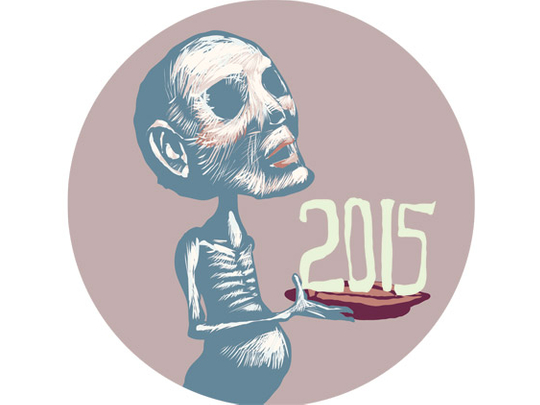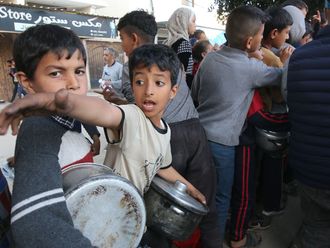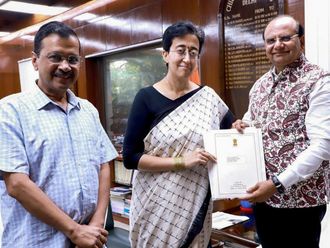
Heads of close to 140 governments, or their senior representatives, are gathering in New York for the annual United Nations General Assembly meeting. Coincidentally, world leaders are also participating in a three-day conference to assess their 2010 pledge to significantly cut poverty, avoid millions of preventable deaths and otherwise improve the quality of life for most inhabitants of our planet. Regrettably, it may not be possible to meet the 2015 target date to eliminate poverty. Why not?
As a reading of the new 2010 Millennium Development Goals (MDGs) Report indicates, "improvements in the lives of the poor have been unacceptably slow, and some hard-won gains are being eroded by the climate, food and economic crises".
Still, because Kofi Annan, the Ghanaian diplomat who served as the seventh secretary-general, persuaded strong and rich countries to adopt eight goals for egotistical reasons, various efforts were made. Even if the planks were marketed as pure altruism, helping the poor was also good for business, always a useful incentive for community leaders or pillars of industry.
The lofty goals included (1) the eradication of extreme poverty and hunger by creating programmes that would halve the proportion of people living on less than $1 (Dh3.678) a day; (2) achieve universal primary education for boys and girls on the assumption that children who became literate could work and earn better wages; (3) promote gender equality and empower women so that they too could secure wages that would be used to purchase food; (4) reduce child mortality rates by two-thirds between 1990 and 2015 through vaccination programmes and other basic health-care services; (5) improve maternal health by three quarters during the same period to avoid high mortality ratios, which have devastating consequences for families; (6) combat HIV/Aids, malaria, and other communicable diseases among a vast population that lacked basic knowledge that would prevent them getting sick; (7) ensure environmental sustainability by saving forests, consumption of ozone-friendly substances, limiting excessive harvesting, and (8) develop a global partnership for development between producers and consumers.
To be sure, the 2010 interim report cited a few gains and concluded that there was a good chance to reach the target for access to clean drinking water by 2015. While Africa fared poorly, a few countries recorded impressive changes.
China, for example, reduced the number of its poor citizens from 452 million to 278 million. According to the 2010 MDG Report, poverty rates in China are expected to fall to around five per cent by 2015, while in India they are expected to fall from 51 per cent in 1990 to 24 per cent in 2015. If the proportion of households living on less than $1 a day spent over 70 per cent of their budgets on food in 1994, land reform legislation and the introduction of banks in rural areas, where people could receive micro-finance loans, recorded a sharp drop in this percentage.
In 2009, the measure at the $1.25 a day poverty line was down to 38 per cent, while the percentages for those living in extreme poverty were decreasing steadily. Delhi hoped that only 188 million would fall under this category in 2015.
As is customary, platitudes flowed in New York, with world leaders competing with their rival plans. Though experts tended to be pessimistic, some of the improvements recorded to date meant that it might be possible to meet many of the eight goals. More money would surely help, with the $120 billion disbursed in 2009 falling short by about $20 billion compared to the total pledged by the Group of Eight at their annual Gleneagles meeting in Britain in 2005, but something else might do the trick as well.
Rather than simply announce a few billions to boost education levels or provide clean water facilities, why should arms manufacturers not limit several of their deadly exports? While we all realise that war and poverty are successful business models, a conscious effort to seek alternative products might help a country like the United States prevent one in seven of its citizens living below the poverty line, as was reported in 2009.
How much would it cost to feed every mouth on the planet? If the claim that the average American spends about $7 a day on food for an intake of about 2,000 calories is true, low-energy but nutritious foods could be harvested for about $3 a day. This will bring the global bill to $21 billion a day if all seven billion of us were fed on this diet. As billions are spent by world governments on a variety of "needs", including $1.5 trillion in 2009 on arms alone, it is not unreasonable to conclude that we have the money to eliminate poverty.
Therefore, and rather than make solemn declarations on the importance of the MDGs, a few ways to address our global needs would be to take a break from excessive warfare, or charge debtor nations reasonable interest rates that would not lock them into permanent insolvency. It is time to adopt a new business model that will stress less killing, more food on every table and fewer highfaluting speeches.
Dr Joseph A. Kechichian is a commentator and author of several books on Gulf affairs.








